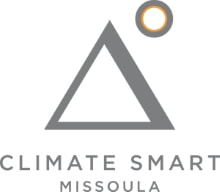|
Our Footprint Fund supports two types of carbon offset projects, which really just differ in scale. In both cases - whether you're an individual, business or organization - your offset dollars help low-income residents or nonprofits save energy and money, helping to build a more climate-safe, equitable, and resilient community.
|
Bridge the GapThese are projects that directly finance needed energy efficiency and conservation measures in large buildings or developments that would not have happened without carbon offset dollars. They may help fund, for example, electrical appliance upgrades or insulation. They also help fund renewable energy (e.g., solar) installations. The Footprint Fund is able to bridge the gap, helping to build "climate smart" buildings. If you are a developer, builder, architect or any other entity interested in using Footprint Fund dollars, review this memo here and be in touch. Our "Proof of Concept" project is the Cornerstone Apartments. Partners include the Missoula Housing Authority, Clearwater Credit Union and MMW Architects. Learn all about the Cornerstone Apartments Offset Project HERE. This project perfectly illustrates how these efforts work, how we can make positive and measurable change and how this will, we hope, inspire more projects along these same lines. |
One Home at a TimeFor these types of projects, Footprint Fund dollars will go directly toward low-income weatherization and energy efficiency measures at individual residences, as identified and prioritized by our partners at the Human Resource Council (HRC). This is the organization that currently weatherizes homes - from stick built to manufactured homes/trailers - in Missoula, Ravalli and Mineral Counties. HRC receives funding for this work from NorthWestern Energy and via federal assistance. These funds have tight restrictions, which means HRC is often unable to implement some of the energy conservation measures that would make the most sense long-term. HRC funds must adhere to a strict "savings to investment ratio"; so, for example, when the price of natural gas is low or assistance falls outside their usual measures, their hands are tied. That's where the Footprint Fund comes in. As long as we can calculate the energy savings and offset value, we can help implement measures that reduce emissions and make a real difference for homeowners. To date in 2023 our funds have enabled 5 homes to receive INSULUTION! If you'd like to support the development of these projects, you can do so today - your donation will go a long way - just head here. |
|
What are the basic steps for these offset projects?
First, however, ensure that any project is true additionality. We have more details about additionality and the technical aspects and number crunching in this document: How to determine and submit a new project. Here are the basic steps to give you an idea of how this works: Determine options for greenhouse gas reductions
These will vary by project, but may include selecting different materials, modifying construction techniques or building design, building envelope improvements, HVAC + Electrical systems, or renewable energy. Estimate carbon savings
For projects utilizing building envelope or HVAC system improvements, estimating GHG reductions begins with a calculation of energy savings. Create an energy model and then convert energy savings to GHG emissions. For projects focused on selecting different building materials, include a carbon calculation that includes material manufacturing, transportation, and replacement costs. Obtain pricing
Obtain pricing for the initial construction cost of your measures. Early in the design process, estimates can be used in lieu of final pricing. However, bid pricing will be required once design is complete. Calculate price per ton
Nationally, the median price per ton for carbon is approximately $20 per ton of CO2e (Carbon Dioxide equivalent). Locally, entities may be willing to pay a somewhat higher price because of the additional local benefits these projects generate, although this will vary by project. |
What will these offsets do?
When HRC crews visit a home, they conduct an audit, determine the suite of weatherization possibilities, and then crunch the numbers (costs + energy saved). Because of the strings attached to their funding, in many cases the HRC workers have to walk away or simply do less at this home. What if: The rooF needs insulation
HRC is only permitted to add a few inches of insulation to the attic. We can add the $ to fill in more. Instead of a few inches of energy saving insulation, this home now has a few feet (to use the technical jargon, we can go from an R15 to R50). Two windows are broken
HRC cannot proceed with a number of solid weatherization efforts until the windows are fixed. We provide the $ to replace 2 windows so the rest of the energy saving measures can proceed. A NEW BOILER IS NEEDED!
A home needs a new boiler, which would save money and energy, but because natural gas is relatively cheap, this measure doesn't quite make the cutoff for a project the HRC can fund. Because it's so close, our Footprint Fund can help cover the difference. more examples to come!
These are the types of measures we hope to fund by offering individual carbon offsets for purchase. Stay tuned as we develop these! |
